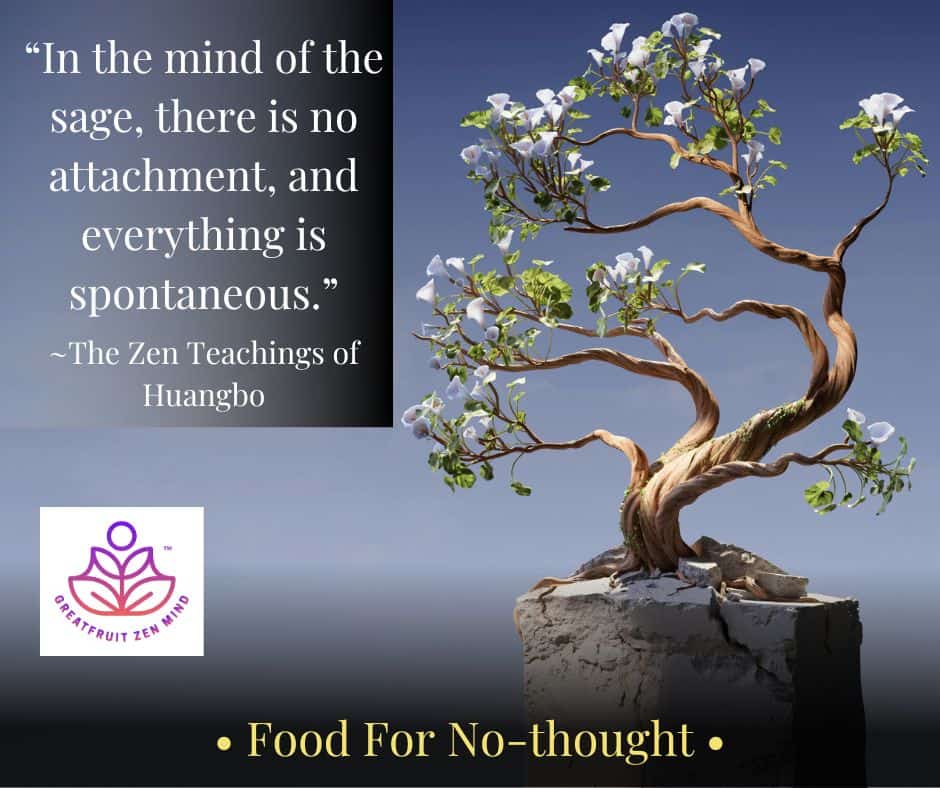Read time 4 minutes. Spontaneous Mind is a stand alone article in our series regarding paradox.
Former pro quarterback Hugh Millen once told a story about John Elway, who gave him a deceptively simple piece of advice: “You don’t want to be thinking out there. You just want to be reacting.”
At the highest level of the game, the margins of error are measured in fractions of a second. Within those fractions lies the difference between greatness, mediocrity, or being out of the league altogether.
This is much like Zen practice. There is a time for study, a time for training—and then a time for letting it all go and simply doing. This is where we meet spontaneous mind, a paradox at the center of Zen: actively passive, empty yet full, effortless yet precise.
Spontaneous mind: No-mind in action
No-mind is the state. Spontaneous mind is the action.
As wu wei reminds us, it is action through inaction. Reading and study are like learning the playbook. Meditation and mindfulness are practice sessions. Spontaneous mind is game time.
But unlike sports, our learning is not accumulation—it is subtraction. Unlearning complexity, clearing the clutter. Spontaneous mind arises when the slate is bare, when the field is open. It is what flows on the other side of clarity.
Centering beyond dualities
Spontaneous mind, focusing on nothing, holds the potential for everything.
We’ve seen how dualities—everything and nothing, yin and yang—are not opposites but movements of the same coin. Impermanence ensures nothing is ever fixed, not fully yin nor wholly yang. Recognition of this dissolves rigidity and frees us from constant judgment.
This is the fulcrum of the teeter-totter. Not tossed up and down, but steady at center. From here, spontaneous mind flows naturally.
Inner dualities and the end of I
To invite spontaneous mind, internal dualities must also dissolve. The ego insists there is a doer. “I am going to get present.” But the words already betray the flaw: “going” implies a future, and “I” implies a separate entity.
Strip those away, and what remains? Only presence itself—timeless, unfolding, impersonal. Effortless awareness without ownership.
When instinct and intellect clash, ego fuels a tug of war. Anxiety, confusion, doubt arise. The split is unstable, always threatening collapse. True union arrives only when the illusion of division fades. Then spontaneous mind requires no effort—it is already there.
Wu wei and unconditional trust
Logic and ego try to control outcomes, but control is always partial and fragile.
Spontaneous mind rests in unconditional trust. The finish line is not in some distant future—it is here. Now. Every moment.
This is wu wei: non-action in action. It is not passivity but the release of interference. We train, we prepare, but we let go of the illusion of control. We act with precision because we no longer grasp at outcomes.
Martial arts embodies this paradox. Bruce Lee once said: “I fear not the man who has practiced 10,000 kicks once, but the man who has practiced one kick 10,000 times.” Discipline becomes freedom. Practice builds trust. And when the moment comes—you don’t think, you react. But it is a reaction free of ego and bias.
Pay attention—Then forget
Here lies the final paradox: active awareness without interference.
Spontaneous mind pays attention, but then forgets. Not ignorance—just the release of the one who claims to be paying attention.
Effortless awareness does not fear the future or cling to the past. It does not impose will or preference. It simply flows.
If these teachings sound repetitive, good. Paradox must be pressed from all sides before it cracks. Each angle is pointing toward the same truth. Until it is lived directly, keep turning life itself into a koan: embrace uncertainty, welcome not-knowing, and live at the hinge of Tao.
Explore more:
Let’s take a moment to get grounded and dispel magical thinking. There is a lot of solid, scientific evidence that the sort of mindful awareness that we are speaking of has all sorts of benefits, both mentally and physically. This article on BBC discusses neuroplasticity and the evidence which supports the rewiring of the brain. It also provides links to some interesting information supporting these conclusions, and to some mindfulness exercises as well.
–
Want more motivational, inspiring and uplifting messages and practices?
🌀 From the GZM Archives – Polished, Preserved, Still Relevant.


Leave a Reply